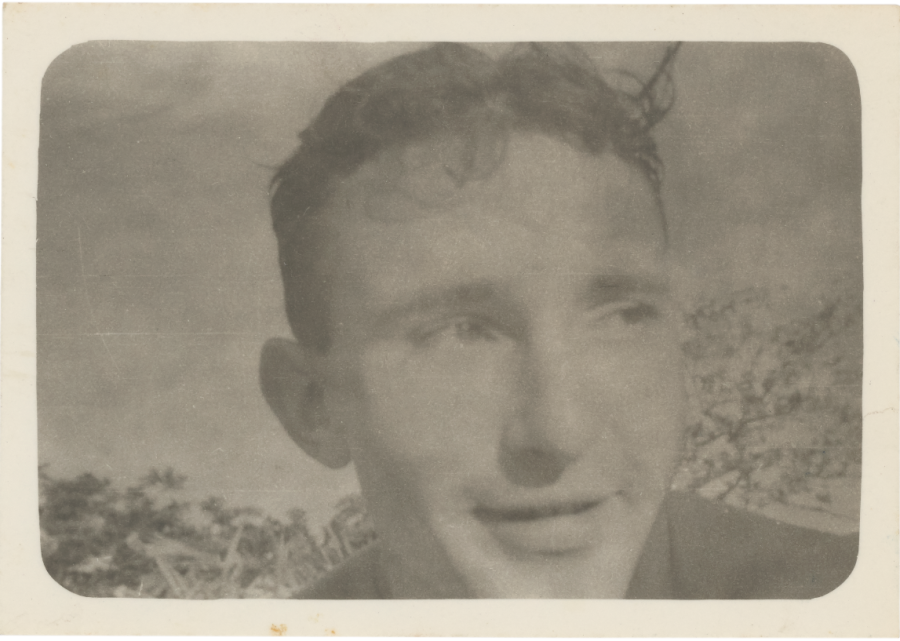With a Trembling Hand and a Thankful Heart
For those who have always lived with modern technology, it is difficult to imagine having to wait for weeks, months or even years to hear from loved ones. But for the family of Lieutenant George Hill Mackisack, this was a reality during the Second World War. When they said goodbye to him in 1941, perhaps they did not anticipate that their letters and telegrams would go unanswered, leaving them with little idea of where he was or how he was doing.
At the beginning of 1942, Mackisack’s family received word that he was in a convalescent hospital in Singapore, recovering from wounds received in an air attack. This was the last news they would receive for almost a year. When Japan invaded Singapore in February 1942, Mackisack’s whereabouts became unknown. He was officially reported missing on 15 July 1942, and his family could do nothing but wait for further news from those on the ground. Though they were hopeful that he was alive and being held by the enemy, it was not until January 1943 that they received a telegram confirming that Mackisack was interned as a prisoner of war in a Japanese camp in Malaya. During the three years that he spent as a prisoner, his family made every effort to communicate with him.
There were many factors that made it difficult to communicate with Australian soldiers imprisoned by the Japanese. The Japanese government failed to publish accurate lists of Allied personnel they held, making it hard for officials and families to establish the whereabouts of Australian soldiers. Although there were rules outlining the treatment of prisoners of war set out in the Geneva Convention of 1929, Japan failed to ratify the agreement and the rules were rarely upheld in the Japanese camps. Consequently, even though letters, parcels, and supplies could be sent to the camps, they seldom reached their intended recipients, as it was left to the Japanese soldiers to distribute them.
Between June 1942 and September 1945, Mackisack’s family wrote almost every month in the form of letters and telegrams. Their correspondence went largely unanswered, and it is unclear when Mackisack actually received them. The letters usually contained updates about the family’s experiences in Australia, their friends and extended family, the garden, local sport, and the family cat, Timmy. They also conveyed an eagerness to hear from Mackisack, “even if it is only a line or two”. In a letter, his sister Francesca described receiving the news that he was alive and being held prisoner:
The phone rang and Dad told me. I think I fainted for about a minute … When I came to, I was so excited I laughed and cried and rushed round telling all the neighbours.
In many of the letters the family also mentioned June, Mackisack’s girlfriend, and broke the news that she had married somebody else. Mackisack later described this as “a jolt to the old ego,” though his mother commented “plenty [of] good fish in the sea”.
By September 1943, Mackisack had begun to send short messages home in the form of postcards, telegrams, and radio messages, usually along the lines of “All well hope health good keep chin up fondest love.” Though these forms of communication were allowed, they were heavily censored by the Japanese, and families were told to be wary of their accuracy. The radio messages were particularly untrustworthy as they were aired during Japanese propaganda broadcasts to lure listeners from Allied countries.
Whilst Mackisack’s messages gave his family reassurance, the strict censorship meant that he could not convey any real detail about the conditions in which he was living. The diary that he kept while he was a prisoner provides a more accurate insight into his experiences:
I was sent to Singapore on the 27 May [1942] and we worked at Ford Works. The work was at times hard and until the arrival of the foodship the food was invariably poor. Pay was low and we had no opportunities to improve our lot by scrounging or by acquiring food illicitly from our guards as was done elsewhere.
Mackisack was then moved to Thailand, where the conditions considerably worsened. Disease was rife, and he found himself working on the Burma–Thailand railway:
Dysentery and cerebral malaria vied with the cholera in killing us off, but the cholera won easily. We had various jobs apart from the railway - the worst of all was pall-bearers to cholera stricken coolies [local labourers].
I spent the days awake waiting for the dark and the nights awake praying for the dawn.
After becoming ill himself, Mackisack was sent back to Singapore for treatment, where he remained as a prisoner until the end of the war. In September 1945 his family received a telegram informing them that he had been reported “recovered” and was awaiting repatriation to Australia.
On 7 September 1945, Mackisack wrote his first letter home in over three years:
My dearest Mother, Father and Sister. It is with a trembling hand and a thankful heart that I write after these long long years. I have felt with you the anxiety of this empty space of silence.
After so many years of silence, his father wrote back: “Mother says she is walking on air, and we are all feeling the same.” In the final letters exchanged by the family before Mackisack’s return to Australia they looked to the future, making plans for their long-awaited reunion.
This collection of letters, diaries, and other correspondence relating to the wartime service of Lieutenant George Hill Mackisack is held by the Australian War Memorial as the Private Records collection AWM2022.250.1.
